Get a 24 hour weather forecast
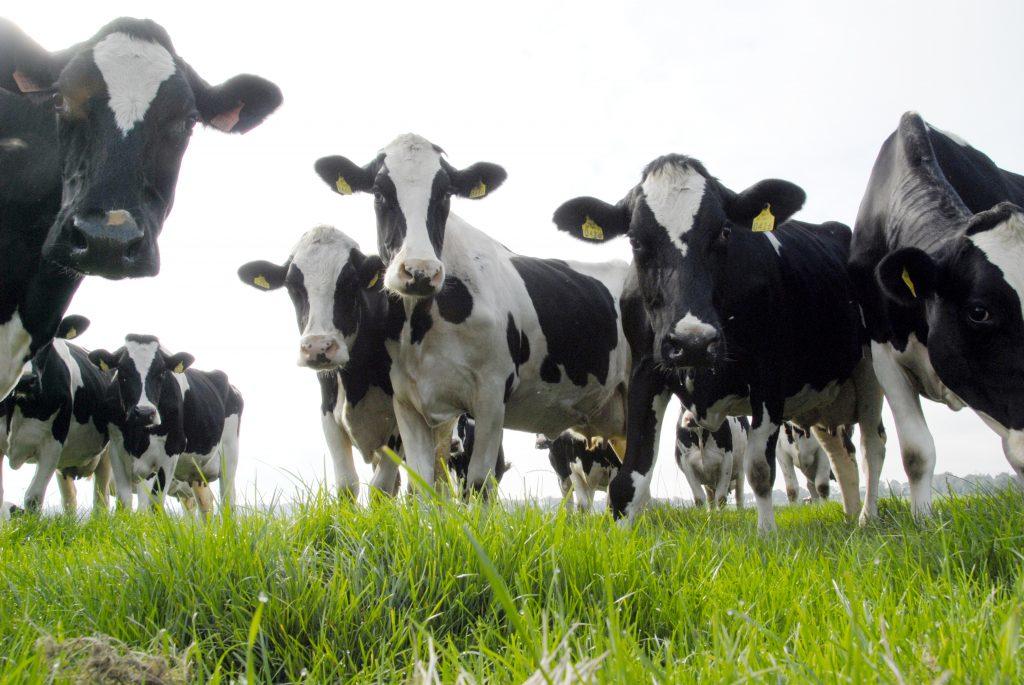
Early Lactation Feeding:
Nutrition and Maximising Fertility Performance
Poor fertility performance is the biggest cause of involuntary culling on Irish dairy farms. Reducing empty rates from 15% to 10% will yield a return of 1c/ltr net margin. For good fertility performance you need;
Key Point: Fertility performance is a product of submission rate and conception rate
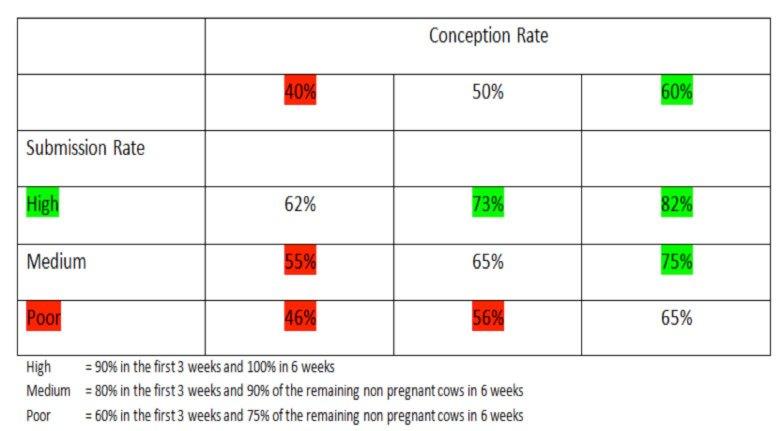
Submission rates is influenced by
Difficult calving or poor hygiene in the calving box can cause infection in the cows’ womb. This needs to be treated appropriately and any cow not bulling by day 40 after calving needs to be checked by the vet.
Key Point: Correct mineral and vitamin nutrition, especially selenium and vitamin E has been shown to have a positive effect on healthy wombs.
Cows calving down in poor BCS had a longer calving to first service and a longer calving to conception interval than cows calving down with a greater BCS.
All farmers should use tail-painting and/or visually inspection their herd 4 times a day for 20 minutes duration.
Conception rate is influenced by:
Energy Nutrition (Negative Energy Balance (NEB) post calving).
Key Point: Energy intake is king.
Negative energy balance and some BCS loss after calving is inevitable, as a cows’ maximum energy output in milk occurs before her maximum dry matter intake (DMI) is reached.
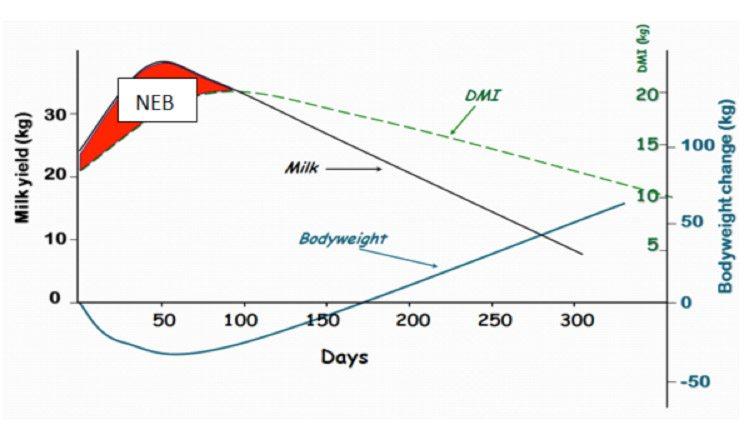
Our job is the limit the amount of BCS loss by maximising energy intake. This is achieved by prioritising the feeding of high energy feeds (grass, high quality silages and concentrates) and by ensuring the cows maximum DMI is achieved.
Key Point: Minimising NEB will lead to higher milk solids, a smaller level of BCS loss after calving, and an overall better fertility performance
At herd level the first sign of NEB is low milk protein % and a high milk fat to protein ratio (ketosis).
Relationship between BCS loss post calving and 6 week in calf Rate (for cows with a pre-calving BCS of >3) (Teagasc Trail 1999).
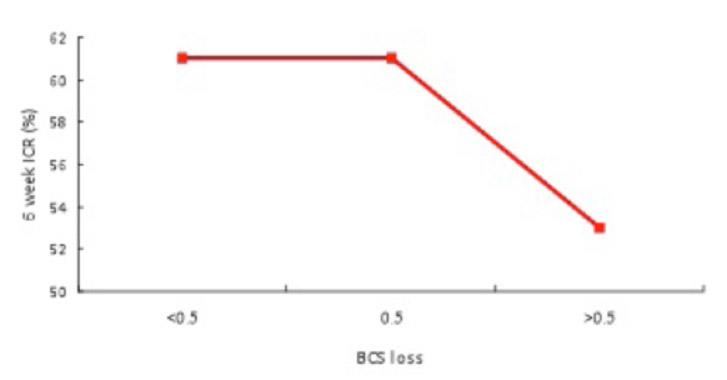
Key Point: It is an absolute necessity that we know the energy requirement of the dairy cow and that we feed to meet this requirement.
Energy requirement of the milking cow:
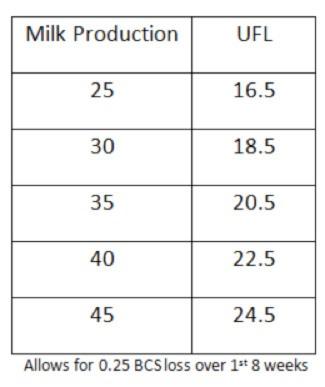
Maximising Energy Intake
Energy intake is a function of the cows dry matter intake (DMI) times the energy density of the diet.
Indoor intake can vary between 3-4% of body weight or between 18 – 24kg DM, but with irish quality forages it usually between 18-20kg DM.
We need to target an energy density of between 0.90 -0.95 UFL per kg in the total diet for higher yielding herds, but with poor quality silage it can be as low as 0.85 UFL/kg.
What affect Dry Matter intake;
– Dry matter, 20% DM silage having a lower intake potential than 25% DM
– Dry matter digestibility, 65% DMD silage having a lower intake potential than 75% DM
– pH and Ammonia, with poorly preserved silages having a lower potential intake than well preserved silages
– 1 forage or 2, grass silage only diets have a lower forage intake potential than grass silage + maize/whole crop/fodder beet.
What affects Energy Density?
In simple terms the more digestible the feed the more energy dense it is.
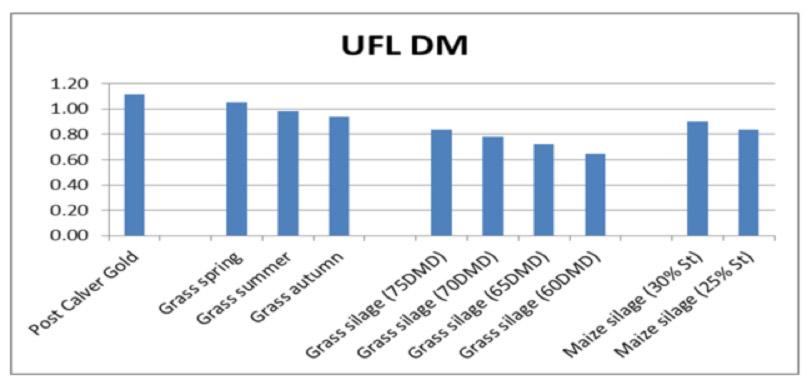
Effect of DMI on milk carrying capacity of the diet

Effect of energy density on milk carrying capacity of the diet
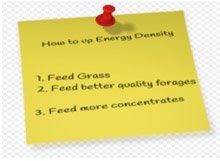

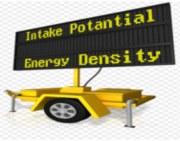
Key point: High intake of low energy feeds can = low energy intake
Low intake of high energy feeds can = low energy intake
But worse still is
Low intake of low energy feed (Low DMD silage without sufficient concentrates) = INFERTILITY
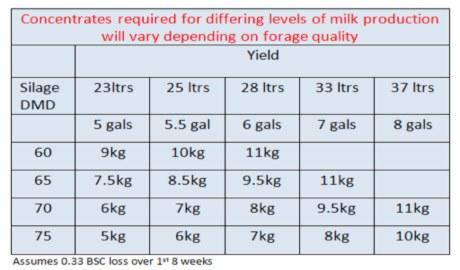
Winter milk and grazing
Heavy autumn grass (>1700kgDM) does not work for freshly calved cows and is best avoided. Grazing heavier covers leads to poor utilisation, especially if buffer feeding. Where >50% of the herd is autumn calving, do not build grass covers in September. Instead aim to graze off the farm by early November and focus on early turnout to extend the grazing season.
Key Point: Keep good quality grass in the diet as long as possible. This will up the energy intake of your cows and lower your concentrate requirement.
Rumen Function
If you’re not making milk you’re making expensive manure.
Poor rumen function leads to undigested feed being passed out in the dung. We need to maximise rumen function by;
– Not over feeding starch and sugar,
– Feeding sufficient effective fibre,
– Keeping the rumen well buffered with products such as yea-sacc.
Protein Nutrition:
Key Point: The amount of crude protein that a cow can turn into milk protein is a function of the energy she is fed. Dietary protein levels should be a function of the energy density of the diet.
Feeding excess protein to energy leads to high milk urea nitrogen and has been shown to ;
Protein requirements of a dairy cow (450kg MS or 6000ltrs) at peak yield are 95 to 105g PDI/KG DM (1800-2000 g PDI/day) or 16 % crude protein.
Mineral Nutrition:
Grass silage is a suboptimal trace element source for dairy cows, deficiencies of copper, selenium and iodine are widespread. Isolated deficiencies in manganese, zinc and cobalt also exist.
Grass silage as a mineral source for dairy cows (100% = daily requirement)
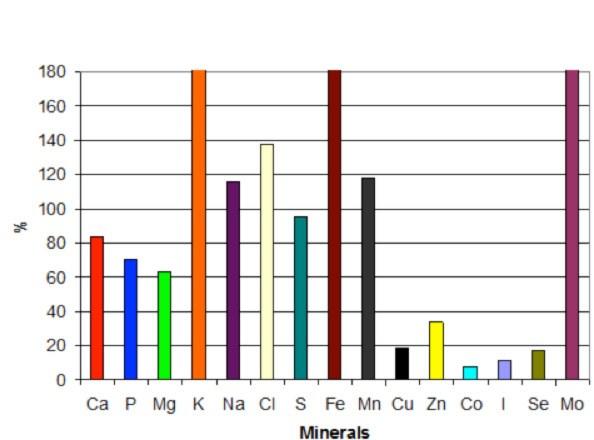
Mineral interactions within grass silage can results in induced or secondary deficiency e.g molybdenum and sulphur cause copper deficiency.
Dietary deficiencies of copper, selenium and iodine are linked to:
Trace mineral requirements of a dairy cow
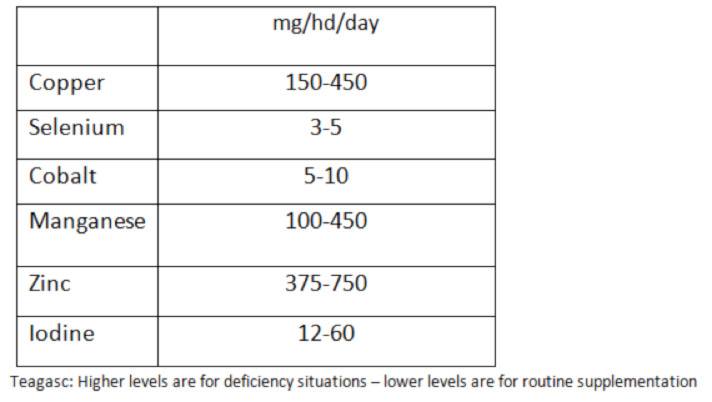
Key Point: It is extremely important to ensure that the inclusion level of the mineral in a concentrate match the concentrate feeding level.
If the concentrate is formulated at 4 kg but your only feeding 2.5 kg of a concentrate the dairy cow will not be getting the correct mineral levels.
The mineral form is also important.
Key Point: Bioplex or organic minerals are not tied up by mineral interactions, therefore ensuring they are available to the cow.
Availability of different mineral sources
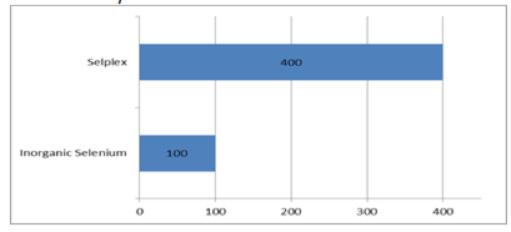
The concentrate should contain adequate levels of bioplex copper, selenium and zinc to ensure fertility performance is maximised.

Dairygold feed range address all the issues.
Benefits of Dairygold feed range;